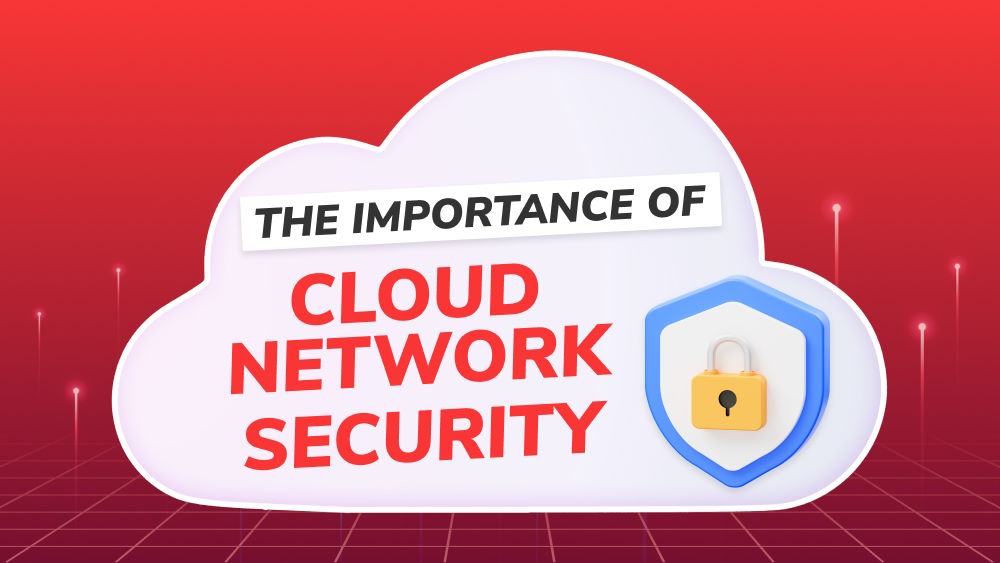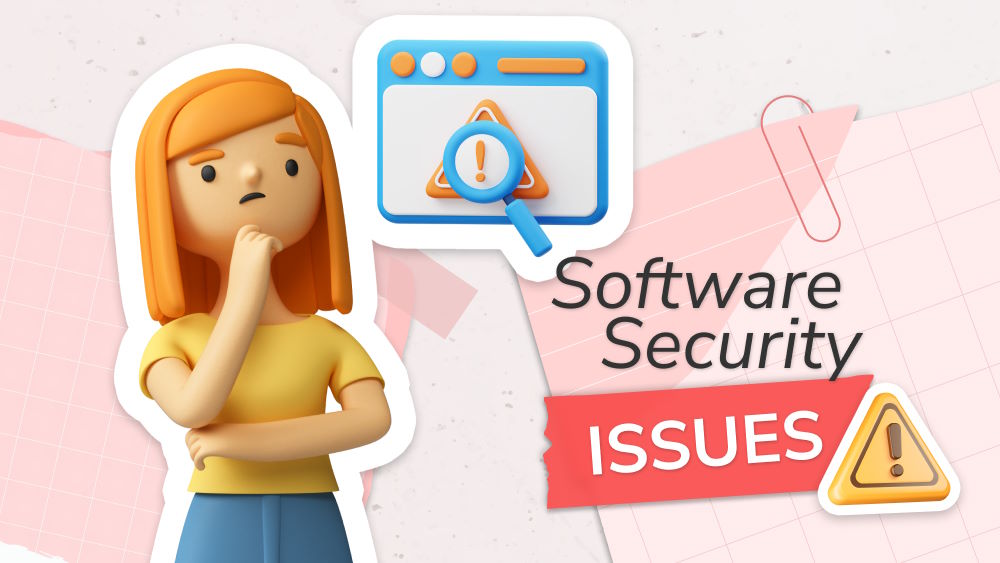Strengthening Your Defenses: The Power of Network Security Assessment

Content Map
More chaptersIBM 2023’s report stated that the average cost of a data breach worldwide was $4.45 million, a 15% rise in only three years. The same report also spelled out the average time to identify a data breach - 207 days.
Seeing how there is a hacker attack every 39 seconds and 300,000 new malware created daily, it seems that organizations take too long to identify a single security breach. Coupled with the fact that only 38% of multinational corporations are ready for a sophisticated cyberattack and an estimated 54% of businesses have experienced at least one attack in the last 12 months, network security has become alarmingly concerning. After all, companies rely on a network of computers to handle their daily business tasks.
If the system is attacked, the damage can be detrimental financially and reputation-wise. Hence, it is high time to seriously identify vulnerabilities and conduct a comprehensive network security assessment. Here is what you need to know.
Network Security Assessment: What Does it Do?

Definition
Network security assessment, at its core, refers to the assessment of an organization’s IT infrastructure to examine how it withstands cyber attacks and identifies vulnerabilities. In detail, the process tries to identify vulnerabilities, threats, or weaknesses that are either internal, external, or social. The vulnerability assessment is conducted thoroughly across the IT network infrastructure, protocols, and configurations, as well as the firewalls, routers, servers, etc.
Why are network security assessments important? This is because the ultimate goal of network security assessments is to uncover hidden vulnerabilities and suggest actionable plans to prevent any compromise of the system.
How Do Network Security Assessments Work?
In order to accurately examine how secure your network is, the best way is to attack it the same way attackers exploit its vulnerabilities. There are several ways to do so. However, no matter what methods and tools are used, every network security assessment aims to answer the following questions:
- Which systems are most vulnerable to hacking?
- Which are the primary points of entry for security lapses?
- What effects does an attack have on a particular part?
- What are the sensitive data that will be exposed during a data breach or data leak?
- What are the solutions to mitigate the risks?
Types of Network Security Assessment

There are numerous types of network security assessments, and new ones are constantly being developed to meet the ever-increasing refined attacking tactics. No matter the network security assessment methodology, the ultimate goal is to analyze how well the current security regulations and guidelines are working and find the security controls to safeguard the product and valuable data.
In this article, we will take a closer look at two main assessment methods - vulnerability assessment and penetration test.
Vulnerability Assessment
Definition
A vulnerability assessment is defined as a technical test that systematically reviews any weaknesses in the system. Vulnerability assessments use automatic tools that evaluate and provide an overview of the vulnerabilities, entry points, malware, misconfigurations, and other security risks. After the assessment, a network security assessment report is produced, along with mitigation or remediation recommendations where needed.
Vulnerability assessments are categorized into four smaller types:
- Host assessment involves assessing critical servers for potential attacks.
- Network and wireless assessment involve implementing policies to prevent unauthorized access to networks.
- Database assessment identifies vulnerabilities in databases or big data systems.
- Application scans identify security vulnerabilities in web applications and their source code through automated scans or static/ dynamic analysis of source code.
Vulnerability Assessment Process
The process is made up of 4 main steps:
- Vulnerability identification (testing): Identifies and tests the security health of applications, servers, or systems using various methods and tools like automated tools, manual testing, vulnerability databases, asset management systems, etc.
- Vulnerability analysis: Identifies the source and root cause of the identified vulnerabilities, identifying system components responsible for each vulnerability.
- Risk assessment: Prioritizes vulnerabilities based on factors such as affected systems, data, business functions, ease of attack, severity of an attack, and potential damage.
- Remediation: Closes security gaps through joint efforts by security staff, development, and operations teams. Remedial steps may include new security procedures, updating operational changes, and vulnerability patch development.
Effective vulnerability assessment requires regular action plans and cooperation between security, operation, and development teams.
Penetration Test
Definition
A penetration test, or also referred to as a pen test, simulates a cyber-attack on your computer system to detect weaknesses that could be exploited. Penetration testing is frequently applied to supplement a web application firewall (WAF) in the context of web application security.
In other words, it uses the same tools and methods hackers use to evaluate the organization’s security posture. Performed by security professionals, it analyses any vulnerabilities that may arise from incorrect or poorly configured systems, known or unknown hardware or software defects, inefficiencies in the process, or shortcomings in technical countermeasures.
Penetration Testing Process
There are five main stages in penetration tests.
- Planning and reconnaissance define test scope and goals, including systems and testing methods.
- Scanning understands the target application’s response to intrusion attempts using static and dynamic analysis.
- Gaining access uses web application attacks to uncover vulnerabilities and exploit them.
- Maintaining access aims to achieve a persistent presence in the exploited system to allow bad actors to gain in-depth access.
- Analysis Compiles results into a report detailing exploited vulnerabilities, access sensitive data, and time spent undetected. This information helps configure the enterprise’s WAF settings and application security solutions to patch vulnerabilities and protect against future attacks.
The Steps to Getting Started with Network Security Assessment

1. Gather Information
Let’s get started with the administrative tasks first. A network security assessment starts with gathering information. This involves everything about an organization’s network architecture, services, devices, and networks. This also includes applications and relevant information like its objectives, security policies, and regulatory requirements.
2. Identify the Scope of The Assessment
After gathering the essential information, it is time to identify the scope of your assessment. After all, sometimes the budget doesn’t allow for the assessment of every wireless network, device, or data. You need to identify:
- Scope of assets: determine which assets need to be excluded, e.g., those that are no longer in use or under maintenance.
- Systems that need to be examined: applications, servers, network services, wireless networks, or any other specific networks.
- Timeframe for the assessment: The length of the assessment should be stated clearly, especially if there are specific days that need to be avoided.
3. Determine the Information Value
In order to effectively limit the scope and budget of your network security assessment as well as select the appropriate assessment method, it’s important to first determine the value of the information you are looking to protect. This involves several sub-steps, including identifying any relevant regulations and requirements and creating a data classification policy.
A data classification policy is a crucial component of any effective network security plan, as it defines a standard way to determine the value of different assets or data within your organization. This allows you to classify each asset as either critical, major, or minor and prioritize your security efforts accordingly.
Once your data classification policy is in place, it’s important to incorporate it into a larger risk management program. This program should include detailed information about asset value, legal standing, and business importance and should be regularly updated and reviewed to guarantee that your organization is always prepared to mitigate potential security risks.
4. Assess Vulnerabilities
After thorough preparation, it is finally time to conduct the assessment. Cybersecurity risks come from everywhere and anywhere: Inside and outside the organization, third-party vendors, individual hackers, or even employees with poor security habits.
No matter what assessment method you choose, a comprehensive security assessment should involve the following basic components:
- Network scanning: This method examines every port on your network, including Wi-Fi, IoT, and other wireless networks, to identify accessible hosts and network services such as HTTP, FTP, SMTP, and POP-3.
- Network enumeration: This method detects security flaws in networks and systems by identifying devices with access to specific services, open ports, and the type of data transmitted.
- Third-party review: It is essential to review the level of access vendors have to sensitive information.
- Internal weakness review: This method involves identifying and assessing internal weaknesses that could potentially lead to security breaches.
- Information security review: Reviewing policies on information security awareness and training for employees.
- Non-technical threats: It is also important to consider non-technical threats like human errors, system failures, adversary threats, and natural disasters to ensure comprehensive network security assessment.
Every process and finding should be carefully documented for future reports. The process is likely going to be time-consuming, so we suggest you look for professional services to take care of the hard work for you. It is also best to have an outside party assess the internal weaknesses.
5. Report and Prioritize
After going through every security risk, asset, and other policy, it is time to work on the network security assessment report. The report should aim to help management make informed decisions regarding future policies, procedures, and budgets.
The content of the report should summarize the methodologies and tools used or any vulnerabilities found. Each vulnerability should be described with its impact, likelihood, risk, exploits, and control recommendations.
6. Implement Controls and Update
It is essential to update the existing policies and procedures, address the issues, and implement security controls through technical means such as encryption, two-factor authentication, automatic updates, etc. These remediation efforts should be followed up regularly to ensure the control efforts are successful in mitigating the risks.
How Frequently Should You Conduct Network Security Assessments?
Network security assessments are not a one-time thing. The frequency may look different from business to business depending on the organization’s structure, nature, budget, industry regulations, and standards. However, regular network security assessments are recommended - they need to be performed at least quarterly. This means there are at least four assessments per year.
If you find that network security assessments are putting a strain on your resources and budget, don’t worry. Orient Software is here to help. Our dedicated squad of experts can help you discover vulnerabilities within your network, test your defenses, and measure the scope and impact of successful attacks on your business. We provide a range of security assessment services, and no task is too hard for us. So, if you want to strengthen your network, don’t hesitate to contact us today!







